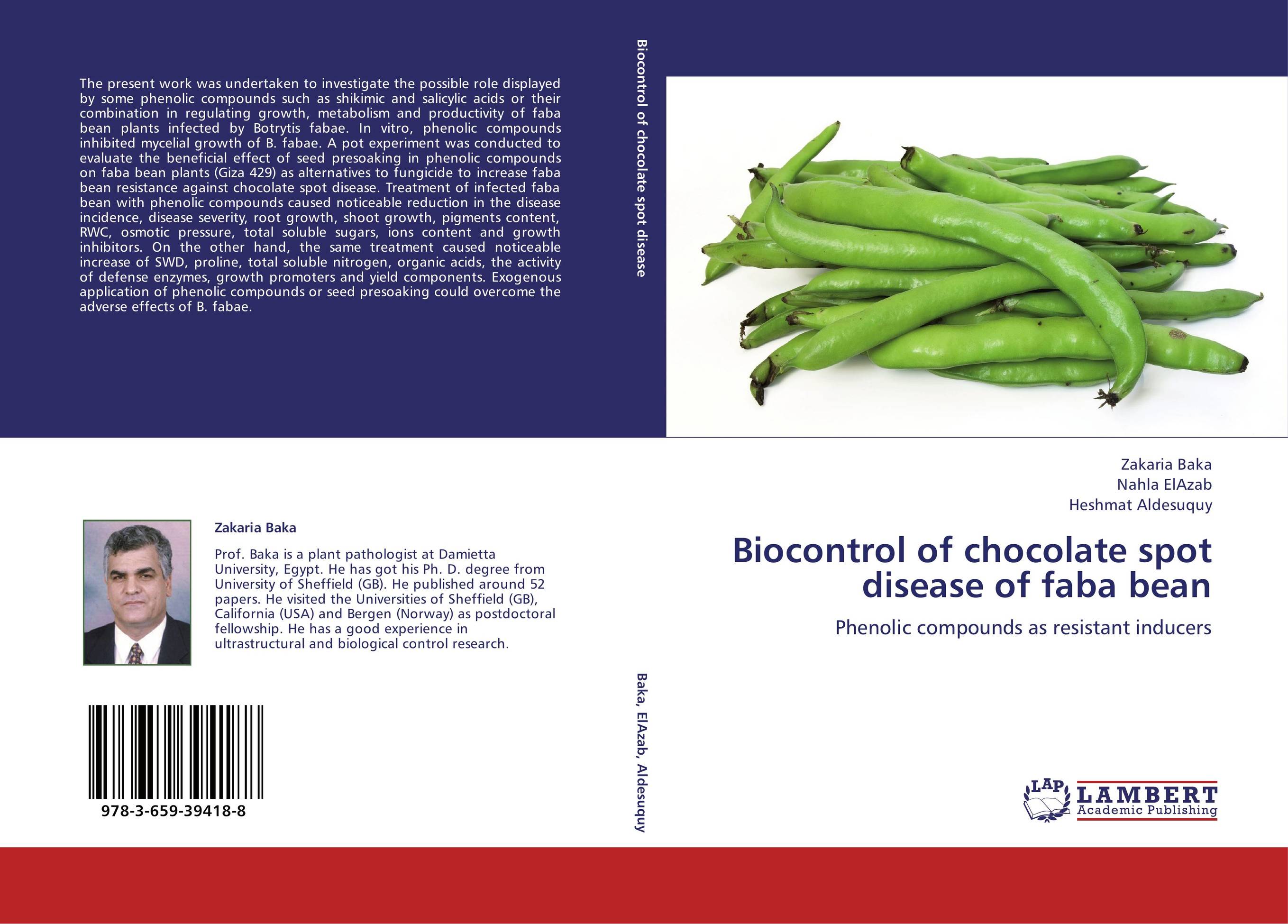| Поиск по каталогу |
|
(строгое соответствие)
|
- Профессиональная
- Научно-популярная
- Художественная
- Публицистика
- Детская
- Искусство
- Хобби, семья, дом
- Спорт
- Путеводители
- Блокноты, тетради, открытки
Biocontrol of chocolate spot disease of faba bean. Phenolic compounds as resistant inducers

В наличии
| Местонахождение: Алматы | Состояние экземпляра: новый |

Бумажная
версия
версия
Автор: Zakaria Baka,Nahla ElAzab and Heshmat Aldesuquy
ISBN: 9783659394188
Год издания: 2013
Формат книги: 60×90/16 (145×215 мм)
Количество страниц: 180
Издательство: LAP LAMBERT Academic Publishing
Цена: 46153 тг
Положить в корзину
| Способы доставки в город Алматы * комплектация (срок до отгрузки) не более 2 рабочих дней |
| Самовывоз из города Алматы (пункты самовывоза партнёра CDEK) |
| Курьерская доставка CDEK из города Москва |
| Доставка Почтой России из города Москва |
Аннотация: The present work was undertaken to investigate the possible role displayed by some phenolic compounds such as shikimic and salicylic acids or their combination in regulating growth, metabolism and productivity of faba bean plants infected by Botrytis fabae. In vitro, phenolic compounds inhibited mycelial growth of B. fabae. A pot experiment was conducted to evaluate the beneficial effect of seed presoaking in phenolic compounds on faba bean plants (Giza 429) as alternatives to fungicide to increase faba bean resistance against chocolate spot disease. Treatment of infected faba bean with phenolic compounds caused noticeable reduction in the disease incidence, disease severity, root growth, shoot growth, pigments content, RWC, osmotic pressure, total soluble sugars, ions content and growth inhibitors. On the other hand, the same treatment caused noticeable increase of SWD, proline, total soluble nitrogen, organic acids, the activity of defense enzymes, growth promoters and yield components. Exogenous application of phenolic compounds or seed presoaking could overcome the adverse effects of B. fabae.
Ключевые слова: Ultrastructure, Induced Resistance, phenolic compounds, Botrytis fabae, chocolate spot disease



